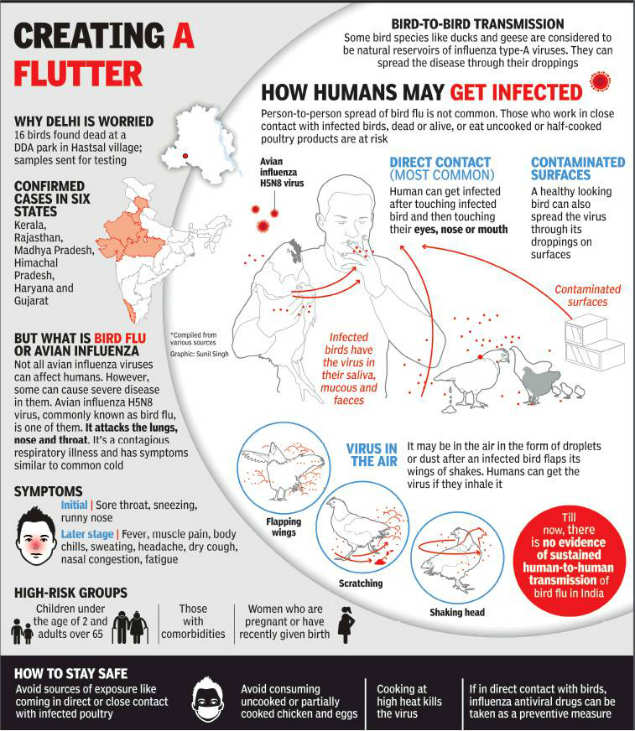
A typical sighting is of a single bird or a pair flying above the forest canopy though in some areas flocks can be seen. Bird banders have found that only 25 of young robins survive their first year.

The most common kind of bird flu is the H5N1 strain.
What is the lifespan of bird flu. Bird flu or avian influenza is a viral infection spread from bird to bird. The most common kind of bird flu is the H5N1 strain. Its mostly a threat to birds and doesnt spread easily among.
The H5N1 strain of the virus is one of the most serious and can be fatal to both birds and people. According to the World Health Organization the mortality rate for humans is around 60. Infected birds spread the virus through their saliva mucus feces and blood.
For instance the most feared strain of bird flu H5N1 which has caused some very severe cases in poultry farmers in poorer countries can bind to the human lower respiratory tract to the lungs but not the upper respiratory tract. The reason for this is the preferred binding site of H5N1 which is a cell surface sugar based entity called Alpha-2 3-sialylglycan is only found in sufficient. There is a general although not exact correlation between size and bird life expectancy but the only accurate method of determining birds ages is through ringing schemes.
Researchers and experts take nestlings and birds captured in very fine nets called mist nets and after taking measurements fix a small numbered plastic or metal ring to their legs and release them or put them back in the nest. Bird flu is usually spread through flocks through direct contact with an infected bird. But Osterholm said wild birds could be shedding more of the virus in droppings and other secretions.
How long do flu antibodies last. According to our study it appears they can last the entire lifespan of the human organism 90 years plus. In our study we were looking for antibodies to the 1918 flu.
This flu virus was reconstructed a number of years ago in the lab so we were able to test to see if 90 years later we could still find. Outside of a host the virus lifespan is shortened. The influenza virus can live on some surfaces for up to 48 hours explains Dr.
Because research suggests that. These small brightly colored parrots tend to live around 15 years in the wild and can live between 20-30 years in captivity with. West Nile virus may be much more deadly than previously believed with deaths attributable to the mosquito-borne disease occurring not just in the immediate aftermath of the infection but also.
According to a recent study published in the The Lancet researchers have confirmed that the A H7N9 bird flu virus which began in February 2013 was transmitted from chickens at a wet poultry market to humans. A H7N9 has already infected 87 people across China of whom 17 have died. There are two main types of influenza flu virus.
Types A and B. The influenza A and B viruses that routinely spread in people human influenza viruses are responsible for seasonal flu epidemics each year. Influenza A viruses can be broken down into sub-types depending on the genes that make up the surface proteins.
Bird banders have found that only 25 of young robins survive their first year. The longest known lifespan of an American robin in the wild is 14 years. The average lifespan is about 2 years.
Bird banders have found that only 25 of young robins survive their first year. The longest known lifespan of an American robin in the wild is 14 years. The average lifespan is about 2 years.
The longest known lifespan of an American robin in the wild is 14 years. The average lifespan is about 2 years. Lifespan of the flu virus on surfaces of objects On hard surfaces such as hard plastic or metal the virus can live for one to two days.
Examples include doorknobs and. On porous materials such as cloth handkerchiefs or paper it can survive for less than 8 to 12 hours On paper tissues for 15. Bird Flu Test Result.
990 killed in 30 mins. 999 killed in 120 minutes. Bacterial Survival Rate Pseudomonas Aeruginosa.
Progress of the Pseudomonas Aeruginosa bacterial survival rate. Bacterial survival rate was significantly lower on photocatalyst applied surfaces versus control for Pseudomonas aeruginosa after. The scarlet macaw can live up to 75 or even 90 years in captivity although a more typical lifespan is 40 to 50 years.
A typical sighting is of a single bird or a pair flying above the forest canopy though in some areas flocks can be seen. They may gather at clay licks.